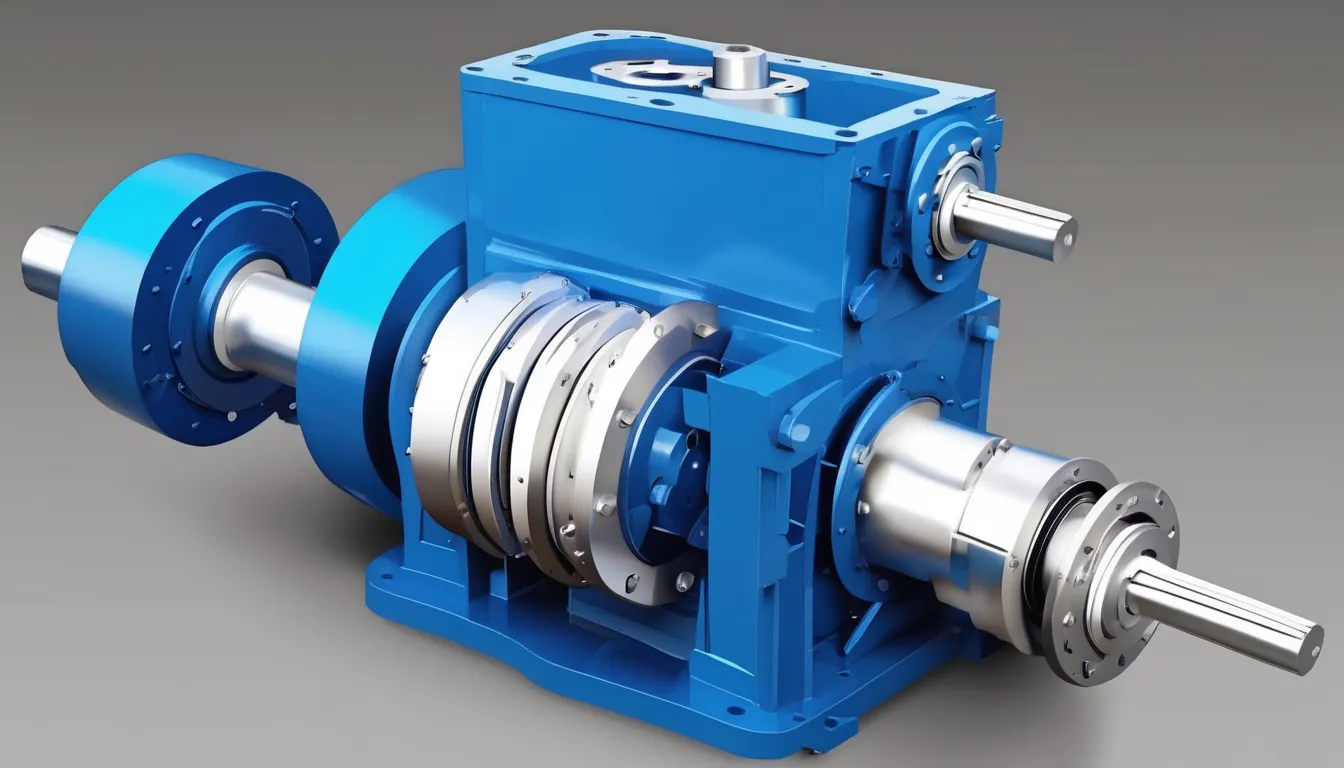Gearbox Manufacturing Innovations That Are Changing the Game

You might not realize it, but gearbox manufacturing is undergoing significant transformations that could redefine industry standards. Innovations such as advanced materials and 3D printing are not just enhancing performance; they’re also shaping the future of design and efficiency. As automation and smart manufacturing techniques come into play, the implications for productivity and sustainability are profound. What does this mean for the sectors relying on these technologies? The answer might surprise you as we explore the nuances of these advancements.
Advanced Materials in Gearbox Design
In today’s competitive manufacturing landscape, advanced materials are transforming gearbox design. You’ll find that materials like carbon fiber, high-strength aluminum alloys, and advanced composites are increasingly being used to enhance performance and efficiency.
These materials offer superior strength-to-weight ratios, making your gearboxes lighter without compromising durability. This means you can achieve better fuel efficiency and improved operational performance in your applications.
By incorporating these advanced materials, you can also enhance the industrial gearbox manufacturer ‘s resistance to wear and fatigue, significantly extending its lifespan. This is crucial in industries where reliability is paramount.
Furthermore, advanced materials often allow for more intricate designs, enabling you to create gear geometries that were previously impossible with traditional materials.
Switching to these innovative materials might involve an upfront investment, but the long-term benefits—like reduced maintenance costs and improved energy efficiency—are well worth it.
As you adapt to these changes, you’ll be better positioned to meet the demands of modern applications, keeping your products competitive.
Embracing advanced materials in gearbox design isn’t just a trend; it’s a necessity for staying ahead in the ever-evolving manufacturing landscape.
The Role of 3D Printing
Three key advantages of 3D printing are revolutionizing gearbox manufacturing.
First, it allows for rapid prototyping, meaning you can design and test new gearbox components in a fraction of the time it would take with traditional methods.
This speed not only accelerates your development process but also helps you adapt to changing market demands more effectively.
Second, 3D printing enables complex geometries that are often impossible or cost-prohibitive to achieve with conventional machining.
You can create lightweight, intricate designs that optimize performance and reduce material waste, ultimately leading to more efficient gearboxes.
Lastly, 3D printing supports customization.
If your clients need specific modifications, you can easily adjust designs without needing extensive retooling.
This flexibility means you can cater to unique specifications and deliver tailored solutions quickly.
Automation and Smart Manufacturing
Automation and smart manufacturing are transforming the landscape of gearbox production. As you embrace these innovations, you’ll notice significant improvements in efficiency and precision. Automated systems streamline repetitive tasks, reducing human error and boosting overall productivity.
You can now focus your skilled labor on more complex problem-solving tasks, enhancing your workforce’s capabilities.
Smart manufacturing integrates advanced technologies like IoT, AI, and data analytics, providing real-time insights into your production processes. By harnessing these tools, you can monitor equipment performance, predict maintenance needs, and minimize downtime.
This proactive approach leads to increased reliability and a smoother production flow.
Moreover, automation allows for greater customization in your gearbox manufacturing. You can quickly adapt to changing market demands, producing tailored solutions without sacrificing quality or speed.
With the flexibility that smart technologies offer, you’ll be able to innovate faster and respond to customer needs more effectively.
Investing in automation and smart manufacturing isn’t just about keeping up; it’s about staying ahead. By making these changes, you’re positioning your gearbox production for long-term success and ensuring you meet the evolving demands of the industry.
Lightweight Gearbox Solutions
As the demand for efficiency and performance in various industries grows, lightweight gearbox solutions are becoming essential. These innovative designs not only reduce weight but also enhance overall system performance. You’ll find lightweight gearboxes in applications ranging from aerospace to automotive, where every ounce counts.
Here’s a quick comparison of different lightweight materials used in gearbox manufacturing:
| Material | Weight Reduction (%) | Applications |
|---|---|---|
| Aluminum | 30-50 | Automotive, robotics |
| Carbon Fiber | 50-70 | Aerospace, high-performance cars |
| Titanium | 40-60 | Military, medical devices |
Enhancing Energy Efficiency
In today’s fast-paced world, enhancing energy efficiency in gearbox manufacturing is crucial for staying competitive. You need to adopt innovative practices that not only reduce energy consumption but also improve overall performance.
By implementing these strategies, you can significantly lower operational costs and meet sustainability goals.
Here are four key practices to consider:
- Advanced Materials: Use lightweight, high-strength materials that minimize friction and weight, which can lead to better energy efficiency.
- Precision Machining: Invest in precision machining techniques to ensure tighter tolerances. This reduces energy loss through friction, enhancing the gearbox’s overall efficiency.
- Optimized Gear Design: Explore gear designs that lower energy losses, such as helical or planetary gear configurations. These designs can provide smoother operation and reduce energy consumption.
- Smart Monitoring Systems: Integrate smart sensors and IoT technology to monitor gearbox performance in real-time. This allows for predictive maintenance, ensuring optimal operation and preventing energy waste.
Conclusion
In conclusion, the innovations in gearbox manufacturing are truly game-changing. By embracing advanced materials, 3D printing, and smart manufacturing techniques, you can significantly enhance performance and efficiency. Lightweight solutions not only boost energy efficiency but also ensure durability. As these technologies continue to evolve, you’ll find even more opportunities to optimize your designs and meet the demands of various sectors. Stay ahead of the curve and leverage these advancements to revolutionize your gearbox production.
